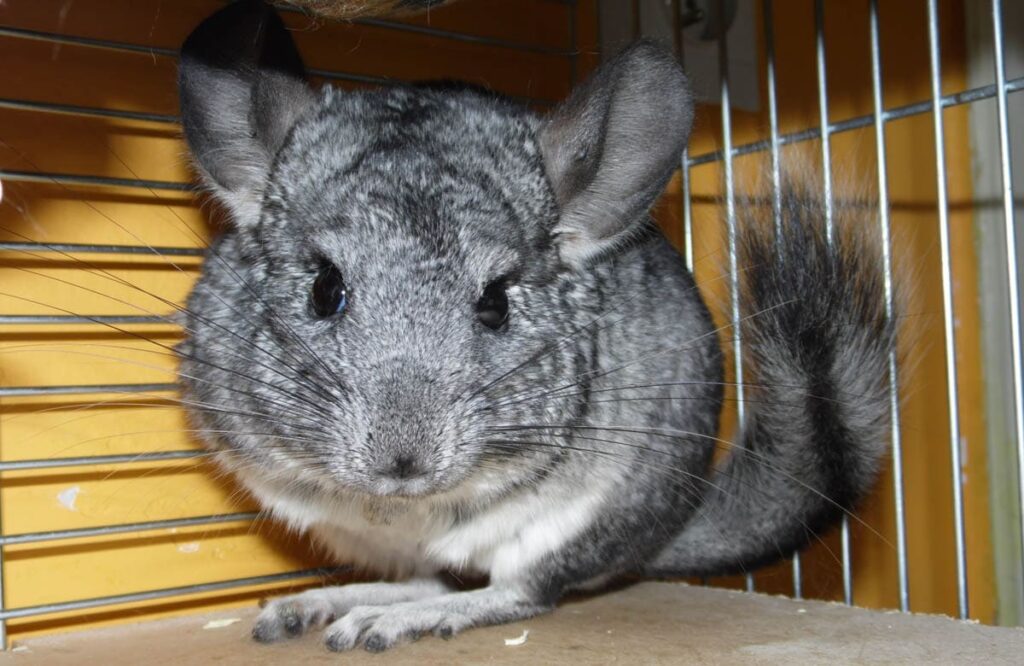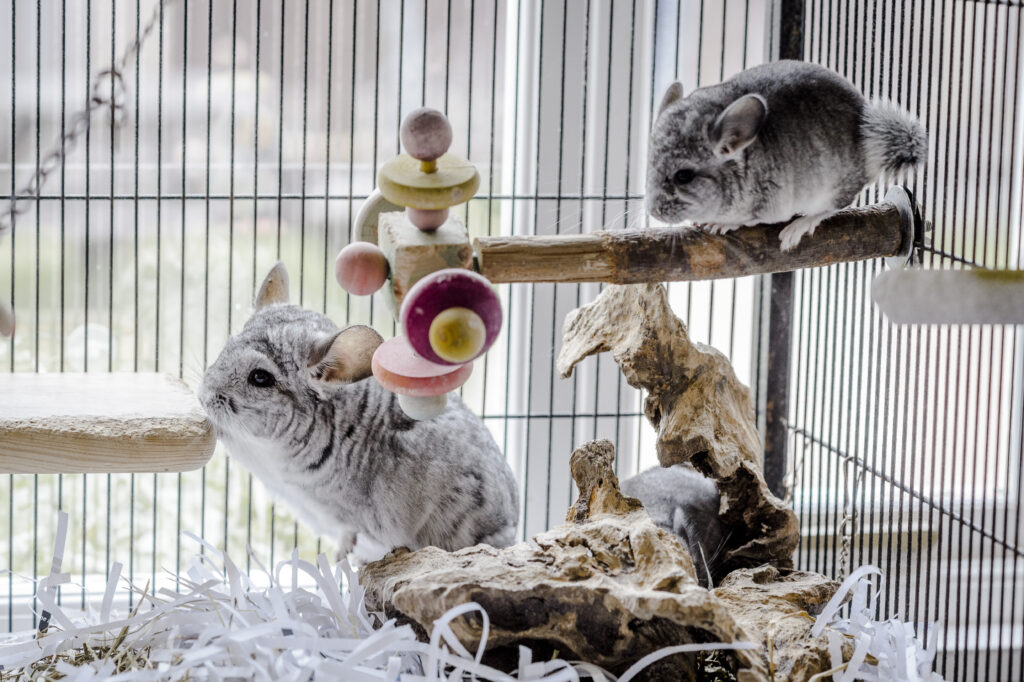Table of Contents
ToggleIntroduction
The world of chinchilla care is a delicate dance of ensuring these small, furry companions have an environment that caters to their unique needs. Central to this is the consideration of chinchilla cage dimensions. The right cage dimensions are more than just spatial parameters; they are the key to providing chinchillas with a secure and enriching living space. Join us as we explore the importance of chinchilla cage dimensions, delving into how these measurements impact the well-being and happiness of our charming, fur-coated friends.
Understanding Chinchilla Behavior
Nocturnal Nature and Activity Levels
Chinchillas, known for their crepuscular habits, are most active during the dawn and dusk hours. Understanding their nocturnal nature is crucial when considering chinchilla cage dimensions. While they may rest during the day, chinchillas exhibit bursts of energy during their active periods. Therefore, a spacious cage with room for exploration and play becomes essential to accommodate their natural behavior. Chinchillas, when provided with an adequately sized living space, engage in activities like running, hopping, and playing, promoting both physical and mental well-being.
Climbing and Vertical Space Considerations
Chinchillas are exceptional climbers, a behavior inherited from their wild ancestors navigating rocky terrains. When designing a chinchilla cage, vertical space is as vital as floor space. Multi-level cages with platforms, ramps, and ledges allow chinchillas to exercise their climbing instincts and promote a more dynamic living environment. Providing various levels not only mimics their natural habitat but also caters to their love for exploring different heights, contributing to a more enriching and engaging living space.
Social Dynamics and Group Housing
Chinchillas are social animals and often thrive when housed with companions. When considering chinchilla cage dimensions, it’s essential to account for the potential of group housing. The cage should be spacious enough to accommodate multiple chinchillas without crowding, ensuring each has its territory and resources. Additionally, a larger cage minimizes the risk of territorial disputes and promotes a harmonious living environment. Understanding their social dynamics and the benefits of group housing is integral to creating a cage that not only meets their physical needs but also supports their emotional well-being.
Minimum Cage Dimensions Guidelines
Floor Space Requirements
The floor space within a chinchilla’s cage is a critical factor in providing a suitable living environment. The minimum recommended floor space for a single chinchilla is about 24 square feet. It allows for essential activities such as hopping, running, and playing. A spacious floor area is especially crucial for promoting physical exercise and preventing obesity, which is common among chinchillas in confined spaces. When considering cage dimensions, prioritizing ample floor space provides the chinchilla with the opportunity to express its natural behaviors and maintain optimal health.
Vertical Height Recommendations
Chinchillas are natural climbers, and vertical space is as important as floor space in their cage design. A vertically oriented cage with multiple levels, platforms, and ledges is highly beneficial. The minimum recommended height for a chinchilla cage is around 6 feet. It enables the chinchilla to engage in its climbing instincts, mimicking its natural habitat in the Andes Mountains. Vertical space not only supports physical exercise but also adds complexity to the chinchilla’s living environment, encouraging mental stimulation and a more enriched lifestyle.
Consideration for Multiple Chinchillas
When planning cage dimensions, it’s crucial to consider the possibility of housing multiple chinchillas. The minimum floor space per additional chinchilla is approximately 12 square feet. It ensures that each chinchilla has adequate room for individual activities and reduces the likelihood of territorial disputes. In a multi-chinchilla environment, providing extra floor space is essential for maintaining a harmonious living arrangement. Adequate space minimizes stress, supports social interactions, and allows each chinchilla to establish its territory within the cage.
Materials And Design Considerations For Chinchilla Cages

Safe and Chew-Resistant Materials
Chinchillas are notorious chewers, and selecting the right materials for their cage is paramount. Opting for safe and chew-resistant materials ensures the well-being of these dental-conscious rodents. Wire cages with coated surfaces, such as powder-coated or galvanized wire, are excellent choices as they resist corrosion and discourage chewing. Wooden elements within the cage should be made from safe, untreated hardwoods like kiln-dried pine. Care should be taken to avoid materials that may splinter or pose ingestion risks. Overall, prioritizing non-toxic and durable materials is crucial for creating a secure and long-lasting chinchilla habitat.
Multi-Level Platforms and Ledges
Chinchillas thrive in environments that provide opportunities for climbing and exploring. Incorporating multi-level platforms, ledges, and shelves within the cage design caters to their instincts. These elevated spaces not only promote physical exercise but also offer the chinchilla various vantage points to observe its surroundings. When adding platforms, it’s essential to ensure they are securely attached and can support the chinchilla’s weight. The design should include ramps or ledges to facilitate easy movement between different levels, creating a dynamic and stimulating living space.
Appropriate Bar Spacing for Security
The spacing between bars in a chinchilla cage is a critical safety consideration. Chinchillas are small and agile, and inappropriate bar spacing can lead to injury or escape. The recommended bar spacing for a chinchilla cage is around 1 inch or less. It prevents the chinchilla from squeezing through or getting stuck between the bars. Additionally, horizontal bars provide better climbing opportunities for chinchillas. The spacing should be uniform throughout the cage to ensure consistent security. Attention to bar spacing is a fundamental aspect of the cage design, contributing to the overall safety and well-being of the chinchilla.
Conclusion
In the realm of chinchilla care, the significance of chinchilla cage dimensions cannot be overstated. As we conclude our exploration into the spatial considerations that define the living space of these delightful creatures, we are reminded that a well-designed cage is not merely a container but a habitat that shapes the chinchilla’s daily experiences. The right dimensions contribute to their physical health, mental stimulation, and overall contentment. In understanding and prioritizing the ideal chinchilla cage dimensions, we pave the way for a harmonious coexistence, where these lively rodents can thrive in an environment that mirrors the vastness of their instincts within the confines of domesticity.







